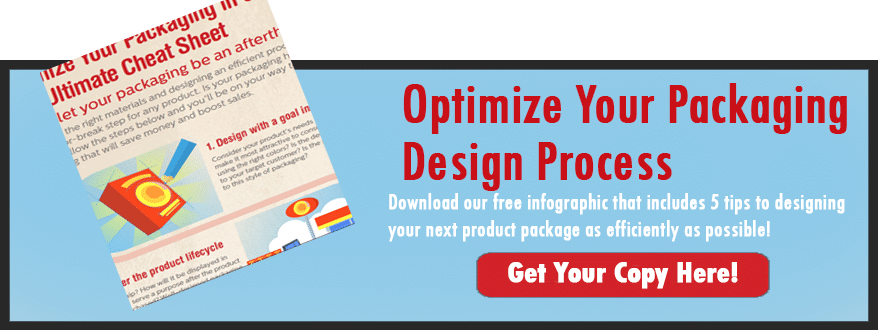8 Undeniable Reasons Why You Should Consider Flexible Packaging
Packaging Materials | Environment | The Business of Packaging | Investment | Packaging Design | Air Pillows | Shipping Protection | Food Packaging | Packaging Psychology
If you haven’t switched over to flexible packaging yet (or you aren’t at least considering it), it’s time to stop and think about why. Flexible packaging has been at the forefront of packaging innovation for decades, and its popularity continues to explode across a myriad of product industries. Not sure why this packaging solution has become such a big deal? You might be missing some critical facts and insights that shed a bright light on the subject.
Every industry, every brand and every product faces its own set of unique challenges, many of which trace back to problematic packaging methods. The benefits derived from employing flexible packaging are undeniable, with advantages spanning virtually every aspect of the packaging process. See why this option has gained so much momentum over the years, and discover eight distinct reasons why it’s more important than ever to seriously consider flexible packaging for your needs.
Your Free Packaging Design Cheat Sheet
Get 5 actionable tips to start optimizing your packaging for efficiency.
1. Because The “Greener”, The Better
With sustainability attracting so much attention from modern consumers, product brands can no longer ignore the need to be conscious about their environmental impact and ecological footprint. Flexible packaging is a top choice for environmental friendliness because it supports the following “green” initiatives:
- Minimizes waste by using the least amount of materials possible to package a product
- Requires less energy and generates a fraction of the production-related CO2 emissions from other packaging options
- Promotes recyclability and more sustainable end-of-life options than many packaging alternatives
- Reduces food waste by extending the shelf life and freshness of edible products
- Requires fewer trucks for transportation, thereby expending less fuel and creating less air pollution
2. Because It (Literally) Lightens The Load
The Flexible Packaging Association (FPA) reports that recent advancements in materials and production processes have reduced the weight of some flexible packages up to 50%. This reduction in weight, combined with the space-saving attributes of flexible packaging, means that more product can be transported with less consumption of fuel and energy.
Not only is this a major environmental benefit (as previously noted), but it can also save product companies immensely on shipping and transportation costs. In fact, the FPA’s recent Flexible Packaging Transition Advantages Study indicates that 45% of brand owners who increased their use of flexible packaging cited shipping/transportation efficiencies as a reason for the shift.
3. Because Consumer Convenience Is Key
Approximately 60% of consumer respondents in a Harris Poll survey said they would be willing to pay more for tangible, functional packaging benefits, such as the ability to reseal, the ability to extend product life, easiness to store and easiness to open. On average, consumers said they were willing to pay as high as 14% more for the top attribute (ability to reseal).
This is a major competitive advantage for brands that choose packaging options enabling greater convenience for consumers. With flexible packaging solutions, your products can feature zip locks, spouts and resealable closures. As consumers increasingly seek convenience, these packaging options provide a major opportunity for manufacturers to command higher prices and increase overall sales.
4. Because You Don’t Have To Sacrifice Durability For Flexibility
When it comes to product packaging, durability is often a critical requirement. Whether you need a solution that protects perishables, is resistant to tears and punctures, prevents tampering or safeguards against damage during transport, you can implement flexible options without sacrificing these durability components.
Stand-up pouches, for instance, are a popular flexible packaging option for food products, especially those with high-liquid contents. They are both durable and versatile, featuring a gusseted bottom that expands when filled. Air pillows are an example of lightweight and secure packaging that minimizes shock and vibration during transit, and electrostatic discharge (ESD) bagging is great for protecting sensitive electronics against static and friction.
5. Because A Product Is Only As Good As Its Shelf Life
A shorter shelf-life generally translates to greater product waste and greater production of packaged goods to fulfill consumer needs. Fortunately, flexible packaging has the ability to extend the shelf life of many products by utilizing the right materials to maintain specific temperatures or levels of moisture and oxygen. This is particularly relevant in the food industry.
Did you know that:
- Flexible film barriers for refrigerated foods have the ability to sustain the freshness of meats for longer periods of time?
- Perforated produce bags help reduce in-store waste?
- The shelf life of some fruits and vegetables is substantially extended when packaged in polyethylene bags or shrink wrap?
- Flexible films have the ability to contain odors and prevent leaks?
- Packaging can be customized to indicate the freshness of a product?
6. Because Food Safety Is Your Responsibility
Given the damage a food safety issue or recall can do to your company’s reputation and bottom line, there’s no question that this should be a factor in your packaging design. Flexible packaging often incorporates barrier material that blocks harmful ultraviolet (UV) rays from the sun, moisture, grease, contamination and oxygen.
Certain types of flexible packaging, like polyolefin shrink film, consist of FDA-approved food-grade materials. These high-quality materials enable you to ensure safe, contaminant-free product packaging that puts consumer health and safety at the forefront of your efforts.
7. Because The Sky’s The Limit On Packaging Creativity
Unique and creative packaging stands out to shoppers, and flexible packaging offers the versatility and customization to take creativity to the next level. You can design your product packaging in practically any shape or size, as well as print high-quality graphics, brand imagery and label information. There are opportunities to play with visual properties like clarity and glossiness, and you can get creative with structural components to design a package that stands up, hangs from a display or sits on a shelf.
8. Because The Cost Savings Are Real
The minimalism of flexible packaging allows for a higher product-to-package ratio, as well as the ability to simplify your process. All of this equates to reduced production and materials costs. As previously noted, reduced weight and size of packaging saves on transportation and shipping expenses as well.
It’s really no wonder why flexible packaging is one of the fastest growing segments of the packaging industry. Combining the best qualities of plastic, film, paper and foil to address unique needs with minimal materials, this solution offers indisputable value. Whether you’re looking to improve product shelf life, get creative with branding, decrease your company’s carbon footprint or achieve other profitability and efficiency goals, it’s time to give flexible packaging the consideration it deserves.
For more information and actionable tips on optimizing your packaging design process, download your free packaging efficiency cheat sheet.
About David Roberge
I am grateful to be part of the outstanding Industrial Packaging team. I am able to hang out with some of the most knowledgeable folks in the packaging industry. I feel even luckier that I am able to share that knowledge with you. I love learning, hiking, and growing people and teams both personally and professionally, and helping companies grow better.



